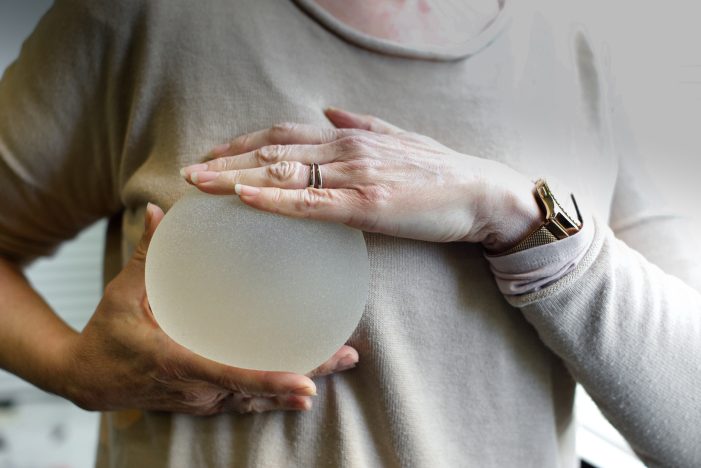
The U.S. Food and Drug Administration (FDA) issued a safety communication on Sept. 8, 2022 warning that certain cancers may develop in scar tissue “capsules” that form around breast implants. Cancers cited in the report include squamous cell carcinoma and various lymphomas. The malignancies are not exclusive to a certain type of implant and have been found in individuals with smooth or textured implants, as well as in individuals that have silicone gel or saline filled implants.1
The safety communication stated that the risk factors for the squamous cell carcinoma and various lymphomas have yet to be established. The average time between breast augmentation and diagnosis of cancer was 23 years. The FDA previously linked textured breast implants to an unusual cancer known as anaplastic large cell lymphoma—an immune system cancer. It is presumed that the textured exterior cause more inflammation.1
Chronic Inflammation May Be Cause of Breast Implant Linked Cancers
Dr. Nigel Mercer of the U.K. Medicines and Healthcare Products Regulatory Agency pointed out that chronic inflammation is often linked to squamous cell carcinoma. Dr. Mercer stated:
Marjolin ulcers happen around long-standing areas of inflammation and leg ulcers; it is not surprising to hear of something similar happening around a breast implant.1
Textured Breast Implants Remained on the Market Despite FDA Confirming Lymphoma Link
Despite the FDA confirming the link to anaplastic large cell lymphoma over a decade ago, the textured implants made by Allergan, remained on the market until 2019. The recall came after nearly 600 cases of cancer and 33 deaths attributed to the devices.2 As of Apr., 1, 2022, over 1,100 cases and 59 deaths have been recorded worldwide. According to The Lancet Oncology:
These numbers are almost certainly underestimated, however, given the gaps in global data, especially when it comes to statistics on breast implants.1
The FDA said it was aware of less than 20 cases of carcinoma and fewer than 30 cases of lymphomas in the capsule surrounding the breast implants. However, given the widespread use of implants, the federal health officials felt a warning was warranted. In the United States, roughly 400,000 women get breast implants every year, 300,000 of those being for cosmetic reasons.2
Black Box Warning Placed on Breast Implants in 2021
After being on the market for over 40 years, the FDA finally placed a black-box warning on breast implants last year. A black box label is the highest warning label placed on medications, biological products, or other medical devices. The warning in the case of implants is due to complications that may occur in breast implant patients including chronic medical conditions such as autoimmune disease, joint pain, and lymphoma. A lengthy list of complications including tissue atrophy, inflammation, toxic shock syndrome, and more can be found on the FDA’s website.3
In light of the newly issued safety communication, the FDA is not recommending removal but rather warning those considering implants and advising those who currently have implants to monitor their implants and seek medical care if they notice irregularities. There are no screening tests for either type of cancer and they do not show up in a mammogram.1
In April 1992, the FDA advised that silicone breast implants should only be used for reconstruction surgery or to correct congenital deformities. A major silicone implant manufacturer Dow Corning filed for chapter 11 bankruptcy due to massive lawsuits in 1995. In 2006, the FDA lifted its restrictions on silicone breast implants, clearing them for cosmetic use in those age 22 and older. By 2010, breast implant was the most common form of plastic surgery in the U.S.4
If you would like to receive an e-mail notice of the most recent articles published in The Vaccine Reaction each week, click here.
Click here to view References:
No comments:
Post a Comment